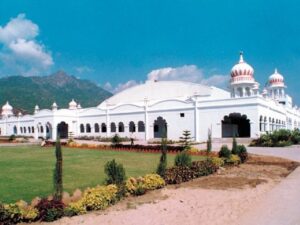A Historical Overview
Mount Abu’s history is as layered as the rocks that form its foundation. Archaeological evidence suggests that the area was inhabited by humans from as early as the 3rd century BC. The region gained prominence in the 11th century with the construction of the Dilwara Temples between the 11th and 13th centuries. These temples are architectural marvels, renowned for their intricate marble carvings that depict mythological themes and intricate patterns, making them a pilgrimage site for Jains across the world.
The Dilwara Temples: An Architectural Marvel

The Dilwara Temples consist of five temples, each dedicated to a different tirthankara, or Jain teacher. The most notable among these is the Vimal Vasahi temple, dedicated to the first tirthankara, Rishabhanatha. Constructed in 1031 AD by Vimal Shah, a minister of Bhima I, the temple is an epitome of elegance and craftsmanship with its detailed carvings and ornate pillars.
Mount Abu: A Blend of Nature and History

Mount Abu is more than its temples; it’s a haven of natural beauty and a witness to history. The hill station’s highest peak, Guru Shikhar, rises to an impressive 1,722 meters (5,650 feet), offering panoramic views of the surrounding landscape. Another key attraction is Nakki Lake, a serene body of water mythologically believed to have been carved out by the gods with their nails (nakh). The lake is not only a picturesque spot but also holds cultural significance, with legends tying it to the love story of the Hindu deity Rama.
Statistical Highlights and Modern-Day Mount Abu
Today, Mount Abu is a thriving tourist destination, attracting over 2.5 million visitors annually. The town’s population of approximately 22,000 swells significantly during peak tourist seasons, reflecting its enduring appeal. The region’s economy has adapted to cater to the influx of tourists, with numerous hotels, restaurants, and shops surrounding key attractions.
The Spiritual Retreat

Mount Abu also serves as the headquarters for the Brahma Kumaris World Spiritual University, a global spiritual movement. This adds a unique spiritual dimension to the hill station, with thousands visiting each year for conferences and spiritual retreats.
Conclusion
Mount Abu, with its rich tapestry of history, spirituality, and natural beauty, offers a unique glimpse into the heart of Rajasthan. From the architectural splendor of the Dilwara Temples to the tranquil beauty of Nakki Lake, the hill station provides a serene escape from the hustle and bustle of daily life. Whether you’re a history buff, nature lover, or spiritual seeker, Mount Abu beckons with its timeless charm and invites you to explore its many wonders.
Choosing Manek Manor for your stay in Mount Abu means embracing a blend of historical elegance, modern luxury, and unparalleled service. Whether you’re planning a family vacation or a romantic honeymoon, our hotel promises an experience that is as memorable as Mount Abu itself. Let us be your gateway to exploring the timeless beauty and rich history of this enchanting hill station. Book your stay with us and discover the perfect blend of adventure and relaxation at Manek Manor.